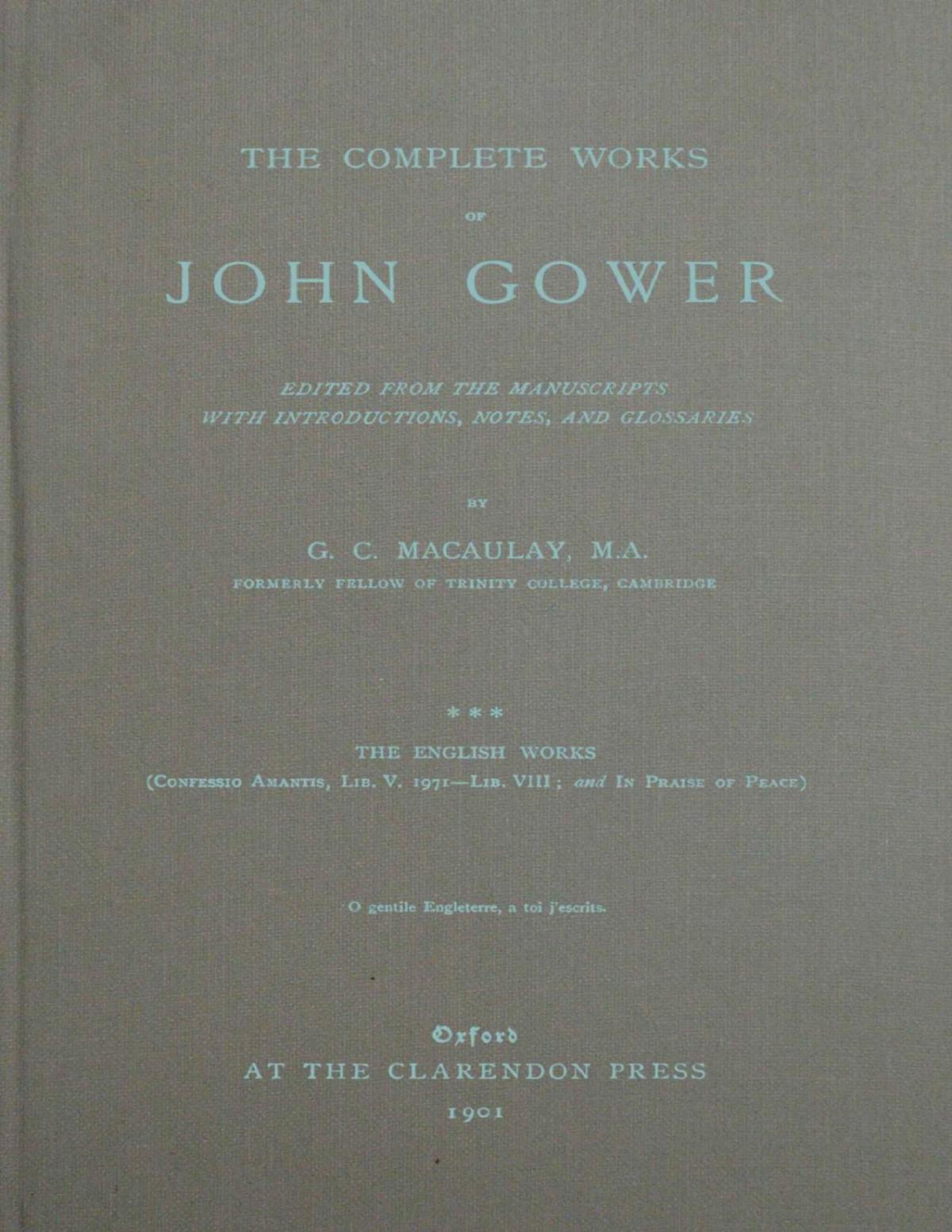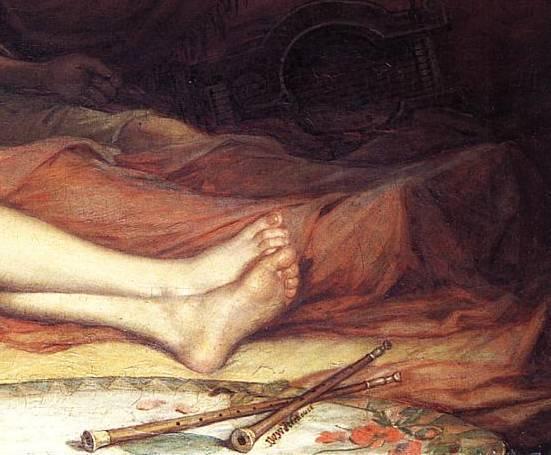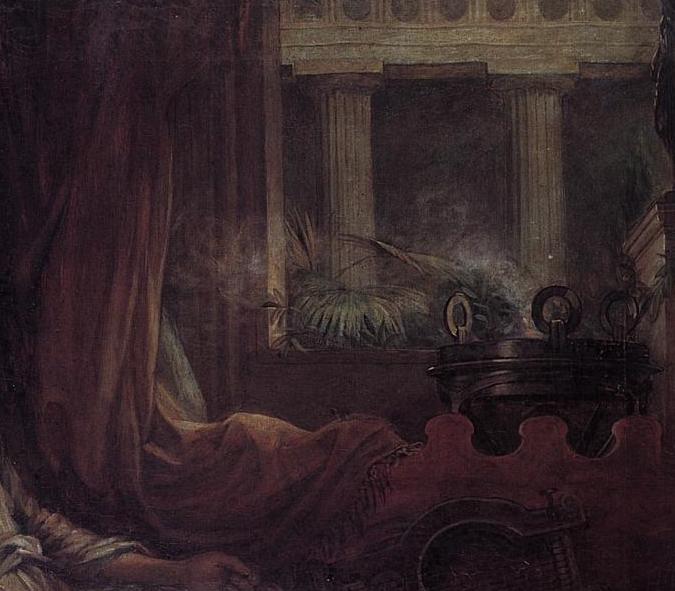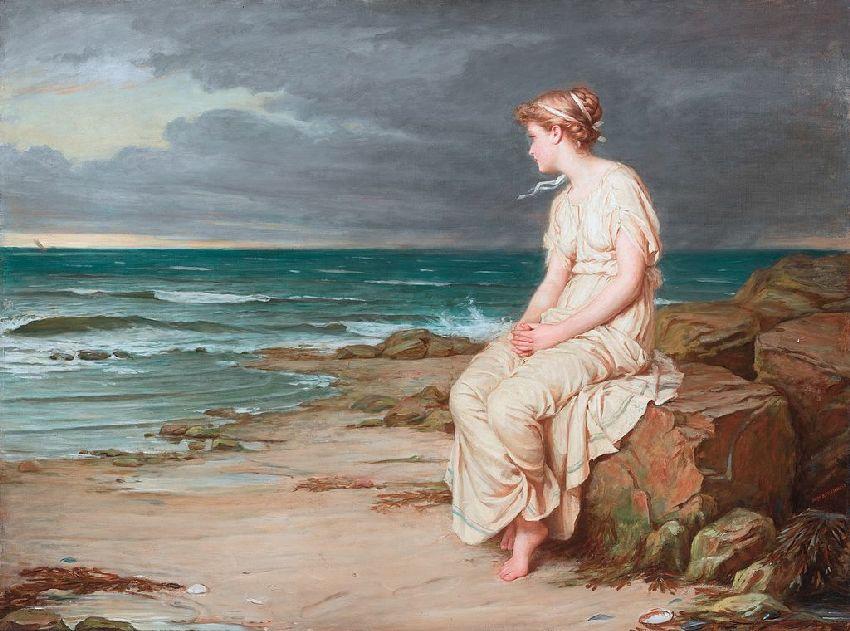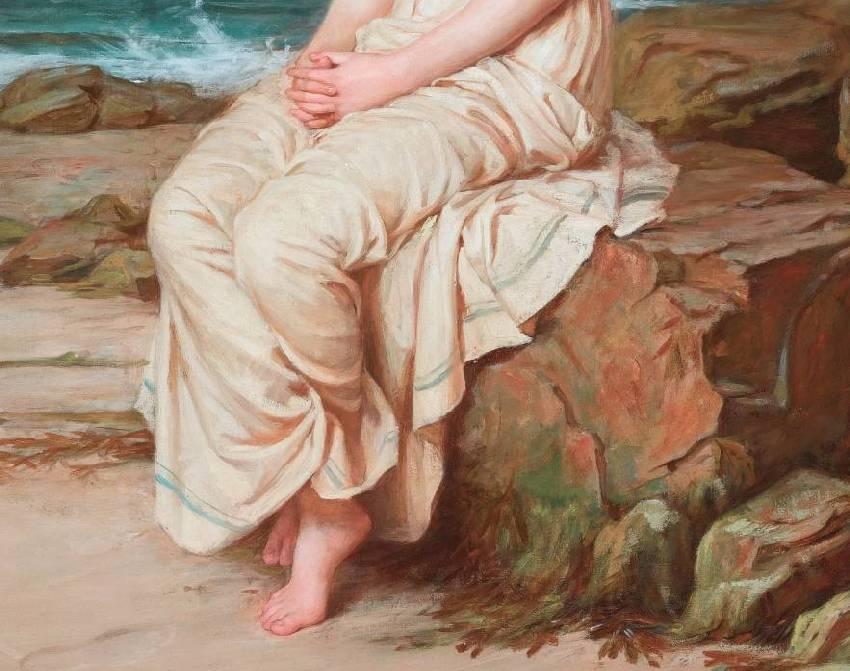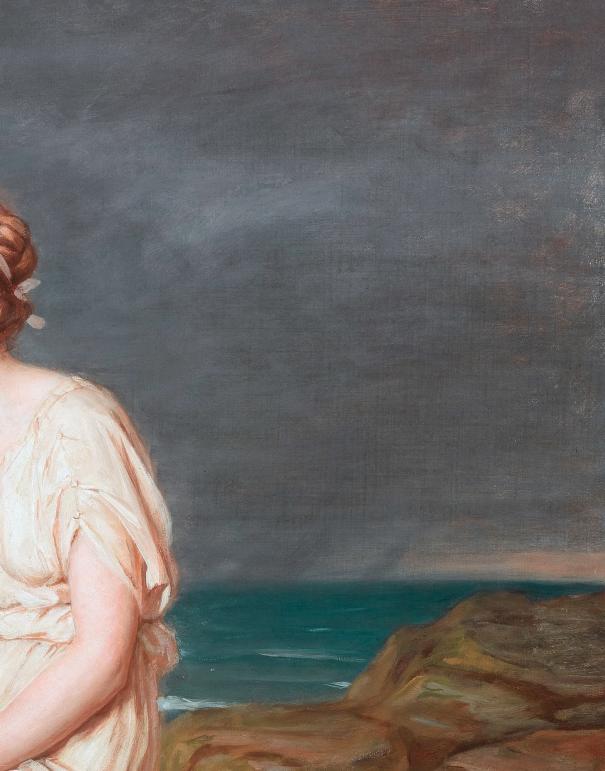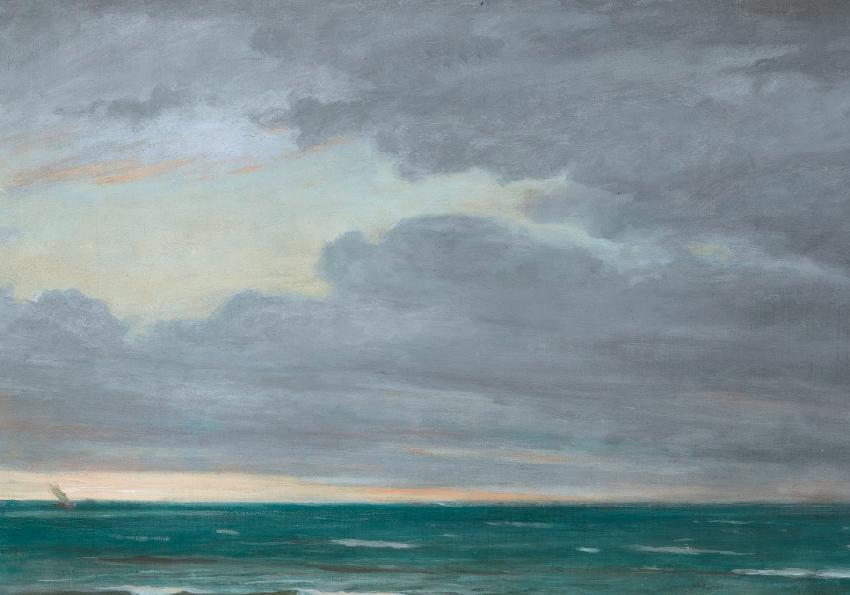Visit to download the full and correct content document: https://ebookmass.com/product/delphi-complete-paintings-of-john-william-waterhouse -john-william-waterhouse/
More products digital (pdf, epub, mobi) instant download maybe you interests ...
Oxford Handbook of Neuroscience Nursing 2nd Edition Catheryne Waterhouse
https://ebookmass.com/product/oxford-handbook-of-neurosciencenursing-2nd-edition-catheryne-waterhouse/
The Complete Illuminated Books of William Blake William Blake
https://ebookmass.com/product/the-complete-illuminated-books-ofwilliam-blake-william-blake/
The New Cratylus John William Donaldson
https://ebookmass.com/product/the-new-cratylus-john-williamdonaldson/
ReFocus: The Films of William Wyler John Price (Editor)
https://ebookmass.com/product/refocus-the-films-of-william-wylerjohn-price-editor/
John William McCormack: A Political Biography Garrison
Nelson
https://ebookmass.com/product/john-william-mccormack-a-politicalbiography-garrison-nelson/
The Complete Works of John Gower John Gower
https://ebookmass.com/product/the-complete-works-of-john-gowerjohn-gower/
John Houbolt: The Unsung Hero of the Apollo Moon Landings William F. Causey
https://ebookmass.com/product/john-houbolt-the-unsung-hero-ofthe-apollo-moon-landings-william-f-causey/
The complete works of John Gower, volume 3 John Gower
https://ebookmass.com/product/the-complete-works-of-john-gowervolume-3-john-gower/
Works of John Dryden. Volume 6 Poems: The Works of Virgil in English 1697 William Frost (Editor)
https://ebookmass.com/product/works-of-john-drydenvolume-6-poems-the-works-of-virgil-in-english-1697-william-frosteditor/
The Highlights
John William Waterhouse
(1849-1917)
Contents
Sleep and His Half-Brother Death (1874)
Miranda (1875)
After the Dance (1876)
Dolce Far Niente (1879)
The Favourites of the Emperor Honorius (1883)
Saint Eulalia (1885)
The Magic Circle (1886)
The Lady of Shalott (1888)
Ulysses and the Sirens (1891)
La Belle Dame sans Merci (1893)
Hylas and the Nymphs (1896)
A Mermaid (1900)
Echo and Narcissus (1903)
Penelope and the Suitors (1912)
The Decameron (1916)
The Paintings
The Complete Paintings
Alphabetical List of Paintings
The Delphi Classics Catalogue
© Delphi Classics 2022
Buy the entire Masters of Art Series at a reduced price
COPYRIGHT
Masters of Art - John William Waterhouse
First published in the United Kingdom in 2022 by Delphi Classics.
© Delphi Classics, 2022
All rights reserved No part of this publication may be reproduced, stored in a retrieval system, or transmitted, in any form or by any means, without the prior permission in writing of the publisher, nor be otherwise circulated in any form other than that in which it is published.
ISBN: 978 1 80170 045 0
Delphi Classics is an imprint of
Delphi Publishing Ltd Hastings, East Sussex
United Kingdom
Contact: sales@delphiclassics.com
www.delphiclassics.com
Enjoying our Art series of eBooks? Then try our Classical Music series:
A first of its kind in digital print, the Delphi Great Composers series allows digital readers to explore the works of the world’s greatest composers in comprehensive detail, with interactive links to popular streaming services.
Explore the series so far…
The Highlights
In this section, a sample of Waterhouse’s most celebrated works is provided, with concise introductions, special ‘detail’ reproductions and additional biographical images
Sleep and His Half-Brother Death (1874)

A leading member of the Royal Academy of Arts, John William Waterhouse was the son of two English painters, William and Isabella Waterhouse. He was born and baptised in Rome in 1849. As a child he had the Italian nickname ‘Nino’ (little John), which remained with him for the rest of his life. When he was five years old, the family returned to England and settled in Kensington, London, where his mother and two younger brothers later died of tuberculosis. In 1860 his father remarried and Waterhouse was sent to school in Leeds, where he became familiar with the world of Roman history for the first time. During this early period, he entertained hopes of becoming an engineer, due to his fine technical abilities in design work. On his return to London, he helped his father with portraits and by 1870 he had enrolled at the Academy Schools as a Probationer in sculpture. Six months later he was admitted as a full student and he began exhibiting at the Dudley Gallery. However, his submissions were not sculptures, but paintings. His destined path was finally settled.
The first work by Waterhouse to be accepted for the Royal Academy’s Summer Exhibition was an allegory with a Roman setting, Sleep and his Half Brother Death (1874). He would continue regularly exhibiting through this channel up until his death in 1917. In this early period his paintings are characterised for their rich, glowing colour, often portraying dramatic and beautiful women, with haunting and melancholic themes. The painting concerns the Greek gods Hypnos (Sleep) and Thanatos (Death), who according to Greek mythology were brothers. The two figures recline side
by side on a low couch. The interior is lit by a lamp, highlighting the foremost figure, Sleep. His head hangs in a heavy daze on his breast, while his right hand holds some poppies, connoting the theme of narcosis and dreamlike-states. By his side lies Death, conversely in dim shadow, with his head thrown back, his posture expressive of peace and lethargy. At Death’s feet, an antique lyre is placed, while immediately in the foreground there is a low round table bearing two pipes. The half-brothers are both young and attractive in their depiction, having a strong likeness with each other, which is echoed by the pairing of the pipes, which are crossing in contact. Architectural elements in the dim background give the scene added depth. The columns of a colonnade are open to the night and touched with muted moonlight, reinforcing the theme of repose.
The painting was clearly important to Waterhouse, still in his early twenties, after the recent loss of two younger brothers to tuberculosis. It is a small canvas, though it signals an important stage in the artist’s development. There is an assured handling of colour, light and shade, which was judged to be a success at the Royal Academy’s exhibition. Critics were impressed by the young artist’s handling of the subject of death and the exploration of the border between unconsciousness and awakening. The canvas reveals Waterhouse’s interest in Aestheticism, through his depiction of a genderless form of beauty, concerned with intense and sensuous experiences, which could be induced by intoxication and psychotropic excess. Similar to Michelangelo’s Dying Slave sculpture, these brothers appear to be locked in the throes of a euphoric rest, tentatively balanced between life and death. Though Waterhouse had lost his two beloved brothers, he had preserved their memory for all time through this impressive debut submission.


Detail
Detail
‘The Dying Slave’ by Michelangelo, Louvre, Paris, 1516
Miranda (1875)
An enduring subject of Waterhouse’s paintings is a beautiful woman set against a picturesque or wild backdrop, usually employing a water setting. The first such canvas was Undine, depicting the water nymph pining by a fountain, which was created as early as 1872, during his formal training period. The subject would continue to haunt his output for the rest of his career. The following plate, based on the character of Miranda, the sorcerer Prospero’s daughter in Shakespeare’s tragicomedy The Tempest (1611), was exhibited at the Royal Academy a year after the successful debut of Sleep and His Half-Brother Death. The character would be the first of many Shakespearean heroines to find her way into a Waterhouse painting, at a time when such subjects were especially popular in the English art market. Many years later at the end of his career, Waterhouse would return once more to the subject of Miranda in 1916.
Both versions depict the beautiful maiden alone on the seashore, gazing out towards the ship that will bring her lover, Ferdinand, to the island on which she lives with her father in dreary exile. Whereas the 1916 version is much more dramatic and wild in tone, corresponding to the tempest that opens the actions of the play, in the 1875 canvas Waterhouse chose to set the scene before the play begins, when the storm has yet to threaten the approaching vessel.
Miranda sits calmly on a rock, glancing away to the distant ship, her body inert and her shoulders slouched a far cry from the erect, passionate and romantic figure of the later version. She appears untroubled in the first
painting, though the ominous darkening clouds in the right section foreshadow the complications that will come. Another surprising feature is that she is not dressed in a costume of Shakespeare’s time, but wears classical drapery commonly see in Greek sculptures; note the cords crossing between the breasts and encircling the waist. Her hair is also not arranged in the traditional portrayal of a Shakespearean heroine. The two bands of circling ribbon hint at a more classical arrangement, likely inspired by figures seen in paintings by Frederic Leighton and Albert Moore.
Whereas the presentation of Miranda in the 1916 version is wild and dramatic, her hair wildly blowing in the wind, the earlier Miranda is still and contemplative. The composition is, therefore, understated in its approach. Without the title Miranda, it would be difficult to assign a subject, due to the absence of narrative features. It could simply represent a character study of an ancient woman awaiting a distant lover, with no textual reference. Instead, we are being asked to appreciate the subtle preparation for action that appears outside of the canvas. The brooding melancholy, which only occupies the far right, slowly triggers a sense of danger, unseen as it is behind the heroine, but still tangible.
Detail
‘Undine’, private collection, 1872
The 1916 version of the same theme: ‘Miranda The Tempest’, private collection
After the Dance (1876)

Waterhouse’s early works reveal an informed interest in the classicised paintings of Lawrence Alma-Tadema, which were lionised at the time for their archaeological accuracy. Born in the Netherlands and trained at the Royal Academy of Antwerp, Alma-Tadema had settled in London in 1870, where he remained for the rest of his life. An astute classical-subject painter, he became famous for his portrayal of decadence in the Roman Empire, wherein languorous figures are positioned against the backdrop of imperial marbled interiors and the dazzling blue of the Mediterranean. Clearly, these classical compositions struck a chord in the ambitious Waterhouse, who borrowed many components of Alma-Tadema’s style. However, Waterhouse’s compositions differ particularly in their scale, featuring larger and more content-filled scenes, while the mood is often more melancholic and less celebratory. Throughout the latter half of the 1870’s, Waterhouse produced numerous genre scenes of ancient life, aided by extensive studies throughout Italy, where he was especially entranced by the recent discoveries at Pompeii.
Measuring an imposing 125cm wide, After the Dance was Waterhouse’s submission for his third Royal Academy exhibition, where it was displayed prominently ‘on the line’. This favoured and highly competitive placement was positioned just above eye level, where the crowds would see it clearly an early distinction that belied his age. Alma-Tadema’s influence can be detected in the inclusion of a complex interior space and the preference for an angled view. Coincidentally, the Dutchman had recently exhibited a








